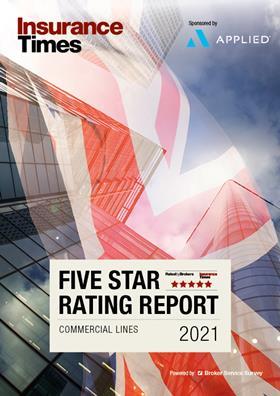The Covid-19 spotlight has illuminated the protection gap around intangible assets – this is a wake-up call the sector can’t ignore
By Editor Katie Scott
Although the concept of intangible assets – and how tricky they can be to insure – is not a new topic within the insurance sector, it is yet another area of the industry undergoing scrutiny thanks to the seemingly never-ending impact of the Covid-19 pandemic.
A new report by Howden Group, Insuring the Invisible, grasped this subject matter by both hands.
It explained that there has been an undeniable uptick in the use of intangible assets within business models and that now, thanks to the wide reach of the pandemic and a corresponding increased dependance on digital technologies, organisations are aware that risks such as cyber attacks, business interruption, loss of reputation or data, supply chain vulnerabilities and operational failures can all happen simultaneously.
However, how many businesses have actually secured the right level of insurance to protect these “invisible” assets?
The report calculated that intangible assets across the top 50 global companies amounts to $11tn – that’s a potentially big gap for insurance firms to attempt to plug.
David Flandro, managing director of HX Analytics, explained: “The shift towards an asset-light economy is transformative; intangible – and largely uninsured – exposures are becoming more substantive.

“The rise of technology companies and peer-to-peer disruptors is indicative of an ability to create value from intangibles. In fact, the bulk of corporate value is today associated with intellectual property, brand and reputation, ahead of property, plant and equipment. The trend towards intangible value is accelerating.”
One shot
This is a trend that insurance businesses cannot afford to ignore – both in terms of insurers providing cover options and brokers educating their corporate clients.
The risk of underinsurance around rapidly growing and evolving intangible assets definitely presents an opportunity for forward-thinking insurance firms.
Although the crux of the problem so far has been around how to value intangible assets, Howden’s report emphasised the opportunities available and suggested a “one shot” approach that insures both tangible and intangible assets together.
It reads: “All of this represents a clear opportunity for (re)insurers to step up, secure their position as trusted partners and finally fill the long discussed ‘loss gap’.
“The range of impacts associated with the intangible assets proliferation will only grow post-Covid, and clients are looking to their insurers to provide solutions.
“Advances in data and analytics, alongside creative thinking around structures and parametric triggers, have increased the insurability of intangible assets.
“The ‘invisibility’ of risk in today’s rapidly changing environment presents significant challenges for the (re)insurance sector.
“An underwriting model long reliant on defined perils fitting conveniently into siloes of pre-existing coverages is no longer sufficient. Today’s volatile and highly complex market of new and emerging intangible risks demands a different approach.

“The long-term goal must be more ambitious, namely offering businesses comprehensive coverage for both tangible and intangible risks across several different coverages with ‘one shot’ policies.
“Such a solution requires close collaboration between insurers and reinsurers, along with potential backing from governments to protect against extreme loss scenarios that transcend sectors and geographies and cause huge loss accumulations.”
Redefining insurability
The report further warned that inaction is not an option, especially as today’s businesses are holding onto more risks than ever before thanks to the non-physical nature of intangible assets.
Adding to this, Charlie Langdale, managing director of financial lines at Howden Broking, said: “A new and more outward approach needs to be adopted by the insurance market in finding solutions for intangibles.
“The market has long been held back by its siloed approach to risk. Whilst it may have been workable in an era when perils were more predictable and geographically contained, it will not be sufficient in the long-term for complex and intangible risks that straddle different lines of business and jurisdictions.”
José Manuel González, Howden Broking’s chief executive agreed, adding: “Covid-19 is a reminder that certain perils do not conform to long-held assumptions around correlations, boundaries and duration.
“We should learn to expect the unexpected and develop solutions for the risks of tomorrow by reimagining the scope of insurability today.”
In our increasingly digital and online world, intangible assets are only going to become more pertinent – and expensive.
Insurers and brokers that start thinking of viable solutions and options now in terms of insurance provision will benefit in the long-term and help businesses to futureproof their operations.













































No comments yet